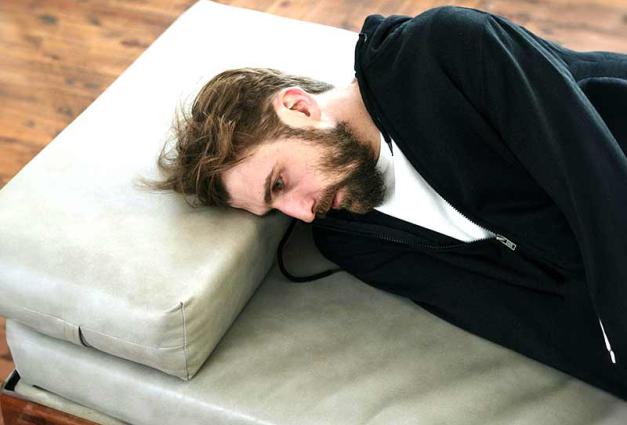Imagine meeting John. He stands straight and tall, his hands rest on his hips causing his elbows to project out, increasing his size. His feet stand apart and his legs form a triangle; he looks strong and sturdy. Before a word is exchanged between you and John, what is your first impression of his personality, his successes in life, his relationships? In other words, what's your read on John?
When forming impressions of others, one key factor that impacts our decisions about people is their nonverbal behavior. How does a person hold their body? How do they move their arms? What about their eye contact? Their facial expressions? These nonverbal behaviors contain cues to people's inner motivations, attitudes, beliefs, feelings, and personalities.
So, how do you perceive John? If you're like most, you see John as dominant as he stands in the classic expansive superman pose. He is a leader. In control. A hero. Well, maybe that's going too far but you definitely want him on your team. Now let's imagine another man, he is standing in a similar way: tall, wide, strong. But this time, his name is Jamal. He is Black. Does your impression change? This is the question we sought to answer.
We began by examining perceptions of White and Black men in expansive and constrictive poses because dominance, the primary trait gleaned from expansiveness, could have important implications for race relations in North America. On the one hand, dominance is commonly understood as a positive trait associated with assertiveness, boldness, and leadership. In some contexts, however, dominance is understood as more negative, associated instead with aggression and force. Might race be an important deciding factor when reading dominance from expansiveness?
Given the strong negative stereotypes associating Black men with aggression, we suspected the answer would be yes.
In our first experiment, participants viewed White and Black men in 80 photographs. Half were standing or sitting in an expansive body pose (back positioned with an erect posture and limbs held away from the body) and the other half held a constrictive pose (slumped posture with limbs held inwards and close to the body). Importantly, all men in the photographs were previously rated as equally attractive and similar in age. We also matched men on size and all men had neutral facial expressions, so these factors cannot account for differences in ratings.
Although White and Black men were both rated as more dominant when in expansive compared to constrictive poses, aggression was a significant intervening trait between expansiveness and perceptions of dominance for Black but not White men. In other words, the race of the target changed the specific brand of dominance that was gleaned from the same expansive body poses, with Black men associated with a more aggressive style of dominance than White men.
Importantly, the less aggressive brand of dominance gleaned from expansiveness for White men bore meaningful privilege. In a follow-up study, although expansiveness led to greater perceptions of business success for both White and Black men, this professional boost was significantly stronger for White than Black men. In another study, participants thought they were going to complete an intimate "getting closer" task with a stranger and chose among the individuals in the same 80 photographs for potential partners. Although White men were chosen significantly more for a partner when in expansive compared to constrictive poses, expansiveness provided absolutely no benefit for Black men in this interpersonal context.
A final study also showed this partner choice effect and provided evidence that greater ratings of aggression for expansive Black but not White men, in particular, explained participants' racial biases when choosing between expansive and constrictive men to interact with.
Sadly, the present research demonstrates another domain in which Black people face bias—in body perception. Even though White and Black men in the photographs were presented in the same poses and were matched on various characteristics, expansiveness was beneficial for White men but weaponized Black men. Thus, whereas White men may have more liberty to act bold, Black men may be penalized for the same behavior.
Notably, the reading of nonverbal behaviors permeates every single interaction and the implications for these effects likely go beyond those studied here. Imagine other contexts. Imagine the courtroom, where jury members study the defendant for their read on his personality. Imagine protests where Black people try to project assertiveness, but instead, are interpreted as aggressive. Imagine a police interaction, where an officer demands a Black man to put his hands up and spread his legs. Could such a pose turn the Black man himself into the weapon? This research certainly opens that possibility.
For Further Reading
Karmali, F., & Kawakami, K. (2022). Posing while black: The impact of race and expansive poses on trait attributions, professional evaluations, and interpersonal relations. Journal of Personality and Social Psychology. doi:10.1037/pspa0000313
Devine, P. (1989). Stereotypes and prejudice: Their automatic and controlled components. Journal of Personality and Social Psychology, 56, 5-18. doi:10.1037/0022-3514.56.1.5
Eberhardt, J. L., Goff, P. A., Purdie, V. J., & Davies, P. G. (2004). Seeing Black: Race, crime, and visual processing. Journal of Personality and Social Psychology, 87, 876-893. doi:10.1037/0022-3514.87.6.876
Francine Karmali is a postdoctoral fellow at the University of Toronto. Her research focuses on intergroup cognitive processes and behavior. She uses a variety of methods to investigate the precursors and consequences of social categorization. Dr. Karmali has published research on responses to expressions of outgroup bias, the boundaries and consequences of strategic color-blind behavior, and the interactive effects of race and nonverbal cues.



